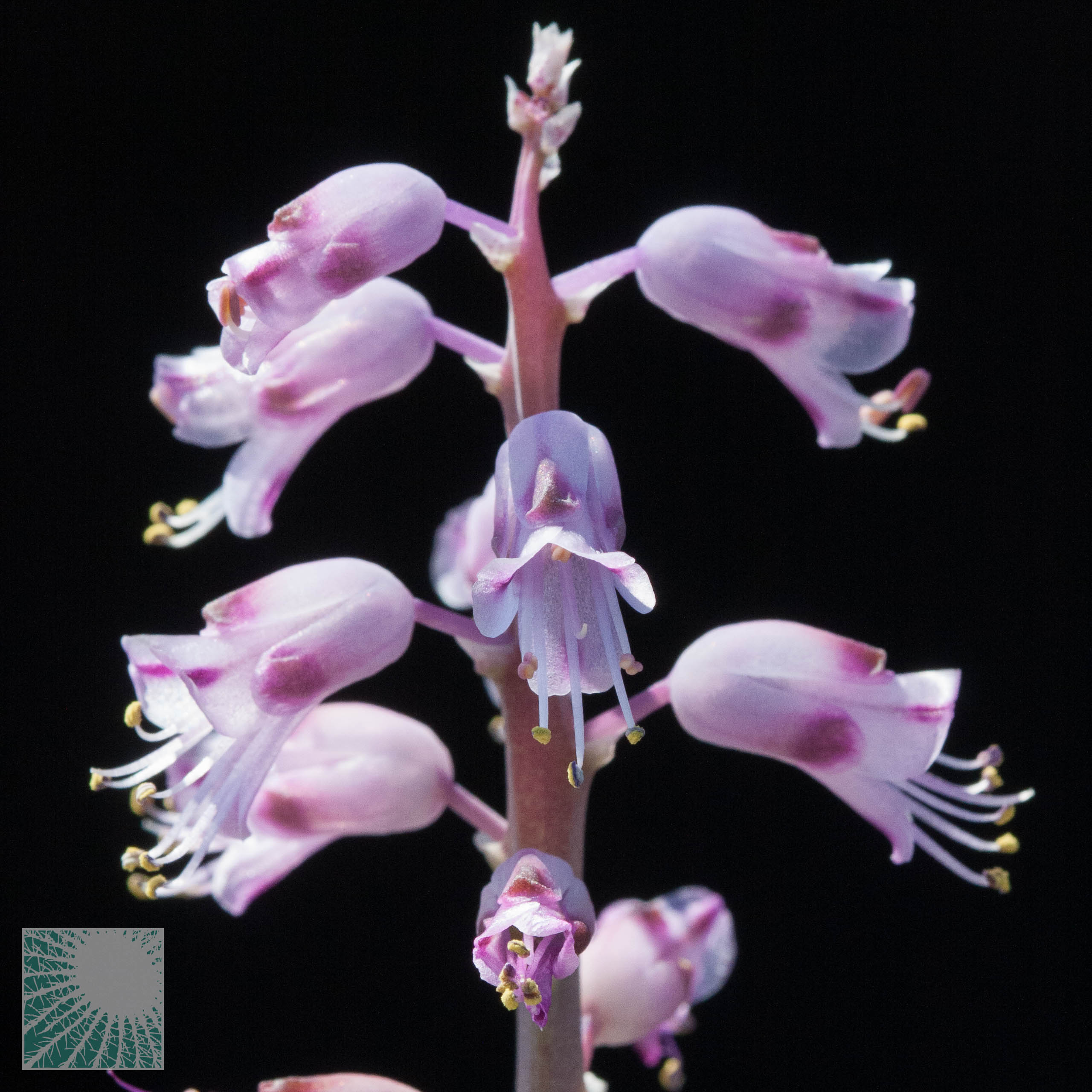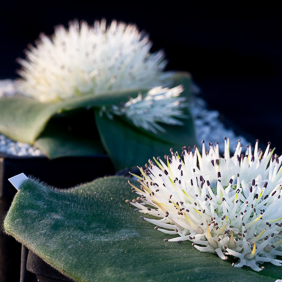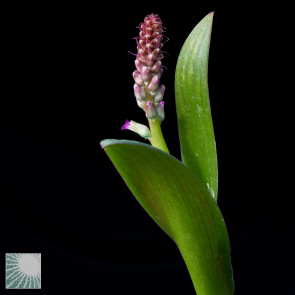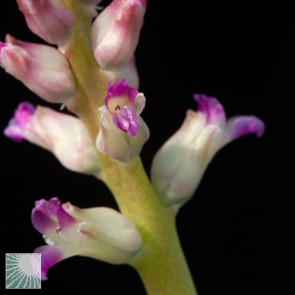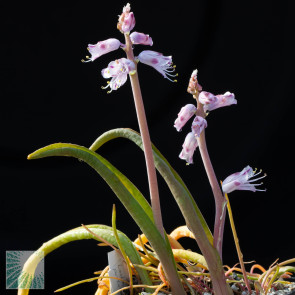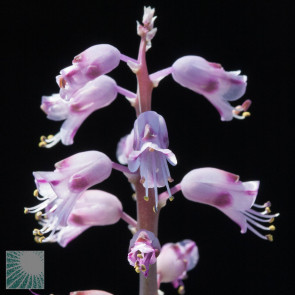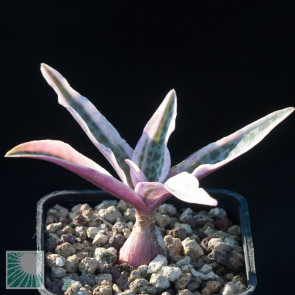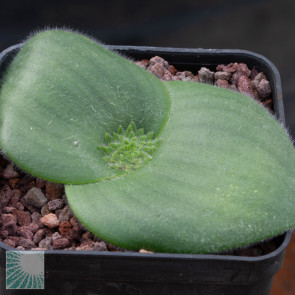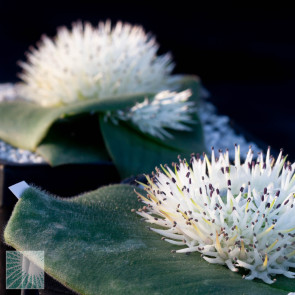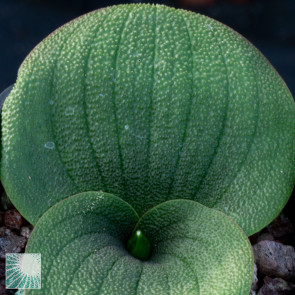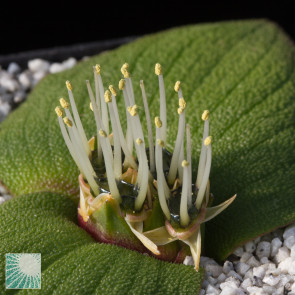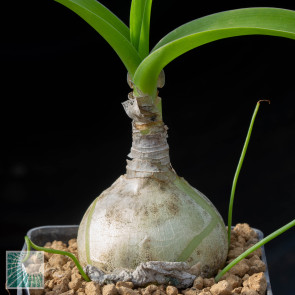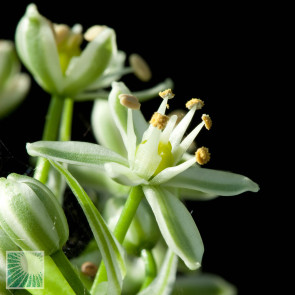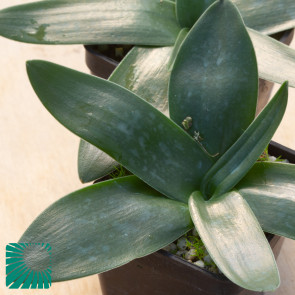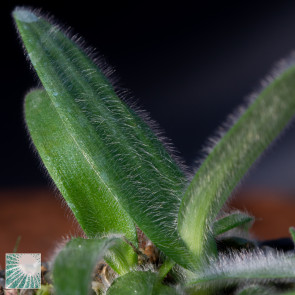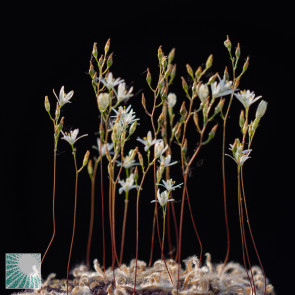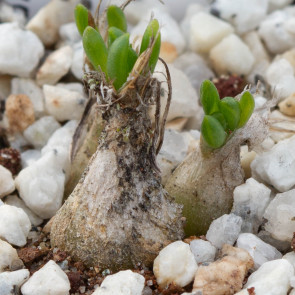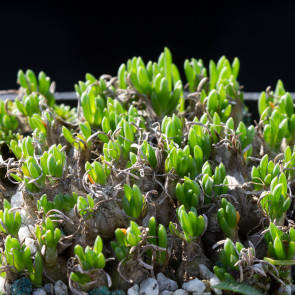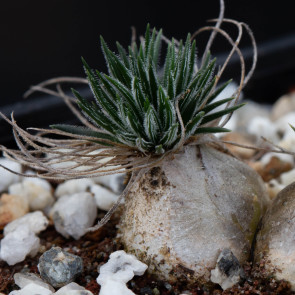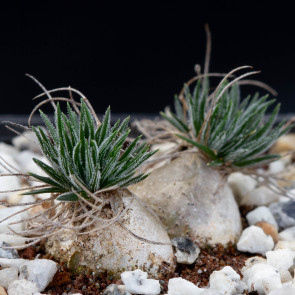You have no items in your shopping cart.
Bulbous
Succulent plants share their habitat with numerous non-succulent plant species with adaptations that allow them to overcome drought periods in a condition of more or less complete stasis, and then resume vegetation with the arrival of the rains.
Among these plants there are numerous bulbous species, some of which are capable of producing spectacular blooms that color the desert after the first rains.
There are numerous dwarf species, sometimes tiny, which are well suited to domestic cultivation.
Cultivation needs
In general, the bulbous xerophytes grow mainly in winter. In nature they are mainly found on sandy, light soils. Their root system is often impressive: if they are equipped with capacious pots, they grow fast.-
Lachenalia carnosa
interesting for the white flowers with the lilac apex. It has two slightly fleshy leaves that remain elegantly flexed. It reproduces spontaneously by division of the bulb. Learn More -
Lachenalia pustulata
Small South African winter grower bulb, typical for the raised pustules that cover the upper page of the leaves making them wrinkled. In spring it produces an inflorescence of about 20 cm in length, adorned with flowers with a short, pinkish-white peduncle. Learn More -
Ledebouria socialis f. variegata
Also known by the name of Scilla socialis variegata, it is a South African bulbous species that has met with great commercial success due to the beautiful pink shade of the leaves. Learn More -
Massonia hirsuta
North of Port Elizabeth, E.Cape, RSA.
African bulbous with winter growth, characteristic for the couple of large leaves flattened on the ground, among which a tight, sessile inflorescence appears, composed of dozens of small intensely perfumed ice-white flowers. During the summer it must be kept dry and sheltered in a shaded position. It resists well up to temperatures close to 0 °C. Learn More -
Massonia pustulata
Swellendam, RSA.
Winter grower bulbous plant with a pair of leaves flattened to the ground that reaches 12-15 cm in diameter, adorned with papillae. Exposure to the sun determines a beautiful dark red-green color.
Flowers are curious; devoid of petals, they show the chalices full of nectar from which the long stamens emerge. Learn More -
Ornithogalum caudatum
Specie davvero peculiare di bulbosa dai tratti di vera succulenta. Il bulbo rimane esposto sopra il suolo e tende a perdere le porzioni secche per esporre i tessuti vitali, verdi, su cui si formano i bulbilli che in seguito cadono a terra per radicare e originare un nuovo individuo (clone). Learn More -
Ornithogalum corticatum
Interesting for the long and narrow leaves, radially open and flattened on the ground, very shiny. The flowers are snow-white, collected in a raceme. The bulb is underground and surrounded by the membranous residues of the old leaves. Learn More -
Ornithogalum hispidum
Little Karoo, South Africa.
Interesting for the three or four small leaves covered with very fine hair. Over time the bulbs proliferate forming dense colonies, from which the thin filaments of the inflorescences emerge. Winter grower. Learn More -
Ornithogalum lithopsoides
Oudtshoorn: Conglomerate hills,Vanwykskraal, RSA.
Dwarf species with epigeal bulbs of a few millimeters in diameter, always wrapped in the residues of old leaves. In autumn, the tiny leaves appear, typical for the translucent band that crosses them longitudinally. Learn More -
Ornithogalum sardienii
Oudtshoorn, RSA.
South African dwarf bulbous that performs best if grown on very poor soil, essentially mineral, so as to develop a tuft of short and dense brush-like leaves. If kept on organic soil, it forms very long leaves, losing its charm. Learn More

